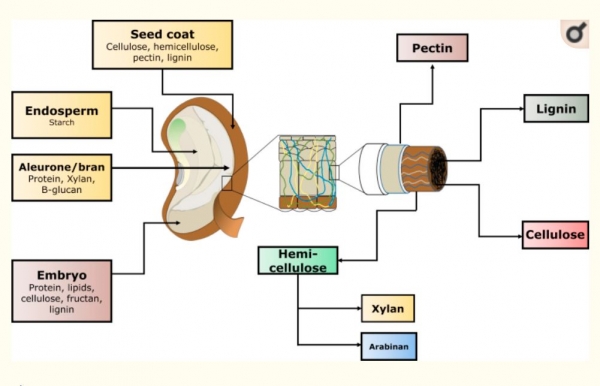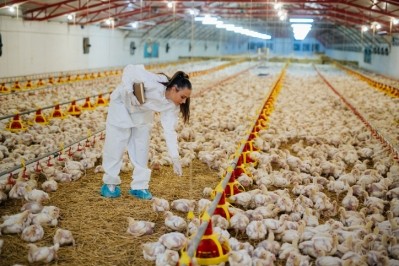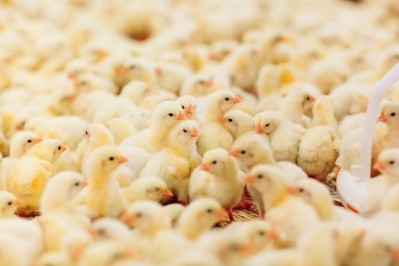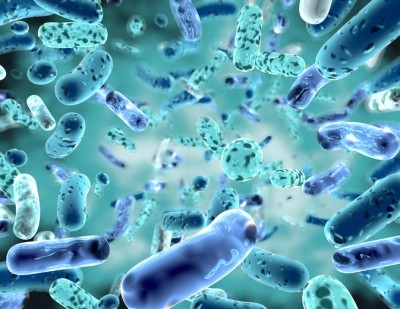Special Edition: Gut Health and Immunity
Review: Fiber can influence the gut microbiota in chickens
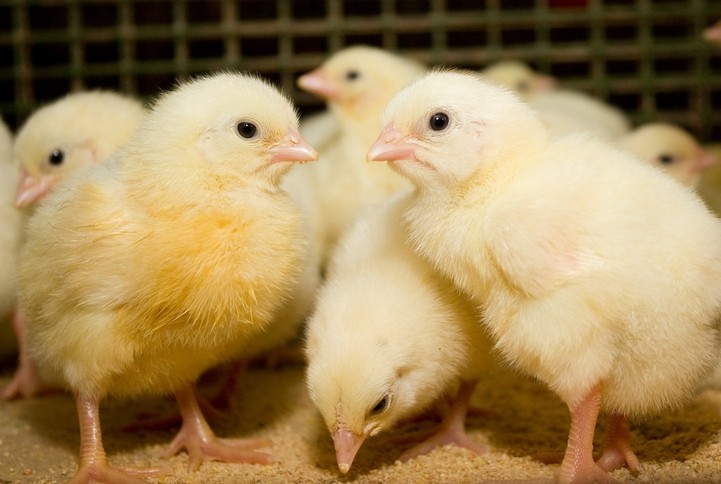
The gut has become a research focus with the shift away from the use of antibiotics as growth promoters (AGP) in poultry, said the researchers, writing in the March 2020 edition of the journal, Animal Nutrition.
“The bulk of the work has been and is still being done on the role of fiber in human gut microbial modulation nutrition, this trend is relatively new in animal nutrition and has accelerated only as a result of the decision by many countries to phase out AGP in response to consumer concerns,” they wrote.
Additional research focus is required to understand fiber structure in general and how it and bacteria interact. Further analysis of the physical form, type, and amount of fiber to be used would be beneficial, said the reviewers, all based at the China Agricultural University in Beijing.
“The challenge of maintaining gut health is still evolving as many alternatives to AGP (pre-, pro-biotics, organic acids, essential oils, etc.) yield variable results (Gadde et al., 2017).
“The key to preserving gut health is to understand the complex interplay between the host and its intestinal microbiome. This information thus helps to strike a balance between beneficial and pathogenic microbiota residing inside the gut. Any disturbance to this balance can initiate a cascade of reactions leading towards the inflammation of the gut and can jeopardize the whole process of digestion, absorption, and metabolism of the nutrients in the host.”
Fiber can modulate the microbiota
Constituents of the diet warrant special attention in the modulation of the gut ecosystem, they noted. “Among dietary constituents, fiber possesses a significant ability to modulate the microbiota.”
Conventionally, dietary fiber was considered a diluent of poultry diet with a negative link to voluntary feed intake and nutrient digestibility (Mateos et al., 2012, Jha et al., 2019). Therefore, diets were formulated with crude fiber not exceeding 3%, especially for young broiler chickens, said the reviewers.
However, dietary fiber has also been suggested to significantly increase the gizzard (Hetland et al., 2005, González-Alvarado et al., 2007, Hetland and Svihus, 2007), amylase activity and bile acid (Hetland et al., 2005; Svihus, 2011) in broiler chickens, they noted.
Also it is now known that fiber sources such as hulls and wood shavings can decrease the pH content of the gizzard by the magnitude of 0.2 to 1.2 units (Jiménez-Moreno et al., 2009, Senkoylu et al., 2009), they wrote.
“Increased gizzard volume and longer retention time allows for more HCl secretion along with stimulative effect of gizzard activity on acid secretion (Svihus, 2011). All these factors, in toto, can promote nutrient digestibility and growth performance along with improved intestinal health (Jha and Berrocoso, 2016).”
Polysaccharides and oligosaccharides
Dietary fiber polysaccharides and oligosaccharides are composed of relatively small numbers of monosaccharides such as glucose, galactose, arabinose, xylose, fructose, mannose, rhamnose fucose and some of their uronic acid forms, said the Chinese authors.
“However, a large number of combinations are possible between these simple monosaccharides, some forming the backbone of the oligosaccharide with varying linkages and others forming side chains at various points on the backbone. Due to this flexibility, dietary fiber is one of the most diverse groups of molecules found in nature (Hamaker and Tuncil, 2014).
Dietary fiber can be broken down only by enzymes that pair appropriately with specific sugar composition, linkages and chain length (Hamaker and Tuncil, 2014), they said.
“Based on chemistry and accessibility of specific dietary fiber to particular microbial groups and consortia, dietary fiber presents a huge potential to modulate gut microbiota.”
Dietary fiber has the potential to shift the microbial population in the gut, and thus some fiber sources could be a suitable option such as wheat bran, they reported, adding that wheat bran is a readily available by-product of flour milling in most countries and serves as a rich source of (in)soluble fiber (Vermeulen et al., 2018), and only a small proportion is soluble (Maes and Delcour, 2001, Maes and Delcour, 2002).
“In a recent publication, it was highlighted that the inclusion of wheat bran in chicken diets could lead to more elaborate cross-feeding among bacteria strengthening the beneficial microbial population (Vermeulen et al., 2018).”
Development and functionality of the GIT
The researchers said that diet and its components, especially fiber, fits perfectly well in the complex relationship of gut microbiota and mucosal barrier since ingested nutrients play an important role in the development and functionality of the gastrointestinal tract (GIT).
The GIT of chickens is enriched with complex microbial communities including bacteria, fungi, archaea, protozoa, and viruses but are dominated by bacteria (Wei et al., 2013). The host accommodates and forms a symbiotic relationship with the resident bacteria (Neish, 2009), they wrote.
This tolerance is manifested by suppression of the host immune response towards the microbiome. The gut microbiota constitutes a protective layer by associating themselves with the intestinal epithelial surface of enterocyte (Yegani and Korver, 2008). In this way, they shield the host from colonization by pathogenic bacteria, explained the reviewers.
These bacteria constitute a commensal relationship with the host driving nutrients and aiding in digestion of a portion of the indigestible fraction of the host's diet. The gut epithelium is covered by a mucous layer that separates bacteria from the mucosa (Biasato et al., 2019), they noted.
A well-structured and intact mucus layer is an integral component of defense used by the host against microbial invasion and infection, continued the reviewers. In this regard, the gut microbiota and diet are considered extremely important to maintain a normal structure and production of the intestinal mucus (Jha et al., 2019).
“Therefore, an altered gut microbiota emanating from dietary changes especially as a result of feeding a low fiber ration can severely damage the mucus layer and enhance susceptibility to gut inflammation and infection by pathogenic bacteria.”
Fiber particle size and structure
Fiber particle size and structure are two important factors that should be considered before the inclusion of any fiber source in the chicken diet, stressed the reviewers.
Smaller particle size in the case of wheat bran has been linked with rapid fermentation and short-chain fatty acid (SCFA) production (Vermeulen et al., 2017), they said.
“It is noteworthy that fiber particle reduction does not alter the chemical composition of the fiber but may enhance the water-extractable GIT fraction (Jacobs et al., 2016). It may also result in the particle being small enough to pass through the sieves at the entrance of the caeca, and thus they can be more effectively fermented.
“These observations were ratified by Vermeulen et al. (2018) who demonstrated that wheat bran successfully increased the Lactobacillus and Bifidobacterium, genera which are known to produce lactate.”
At the same time, Lachnospiracaea were considerably enriched on reduced particle-sized wheat bran. Importantly, many members of Lachnospiracaea family are known users of lactate, producing butyrate in the process (Belenguer et al., 2006, De Maesschalck et al., 2015), added the authors.
The reviewers outlined how fermentation products of fiber can generate prebiotic effects as was suggested by Ribeiro et al. (2018) who noted that the supplementation of exogenous xylanase in wheat and corn-based diets decreased the viscosity of the digesta by degrading the water-soluble arabinoxylan and generated arabinoxylo-oligosaccharides (AXOS) and xylo-oligosaccharides (XOS).
“The XOS and AXOS increased the number of Solirubrobacter and Bifidobacterium genera. Such a shift in gut microbiota is accompanied by greater production of lactate (Kabel et al., 2002).”
Source: Animal Nutrition
DOI: 10.1016/j.aninu.2019.11.004
Title: Dietary fiber and chicken microbiome interaction: Where will it lead to?
Authors: T Mahmood, Y Guo
